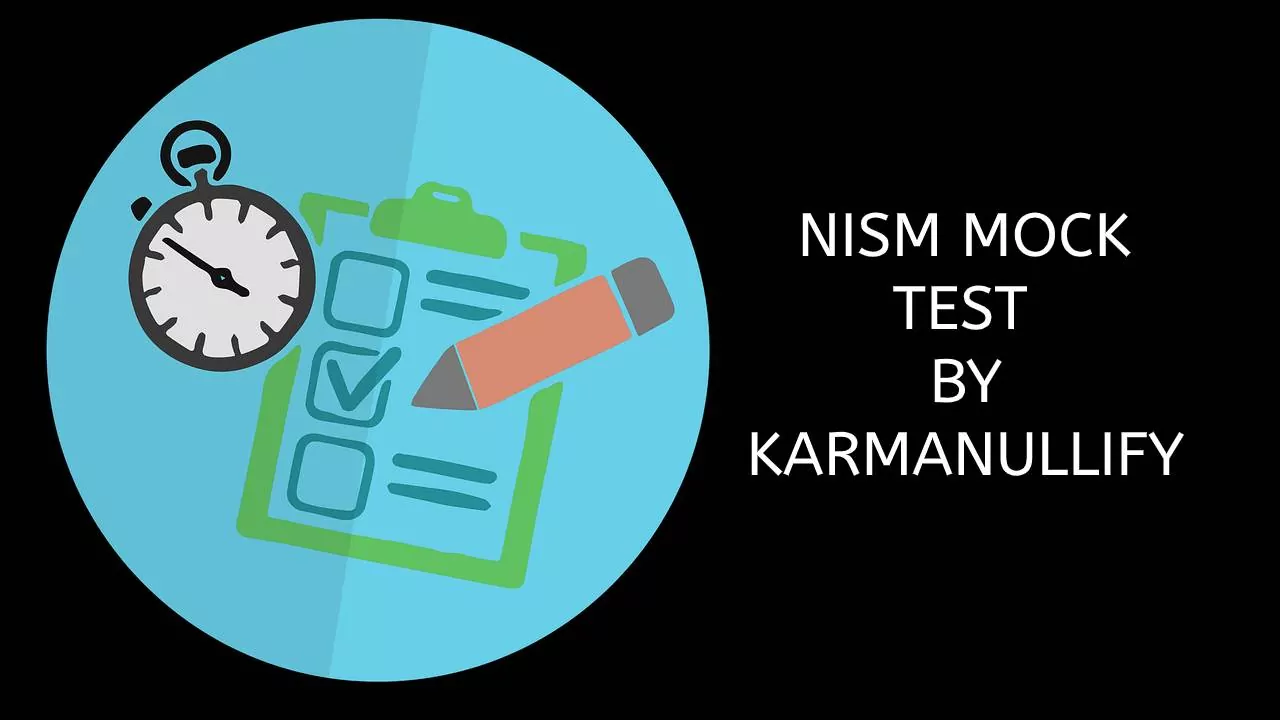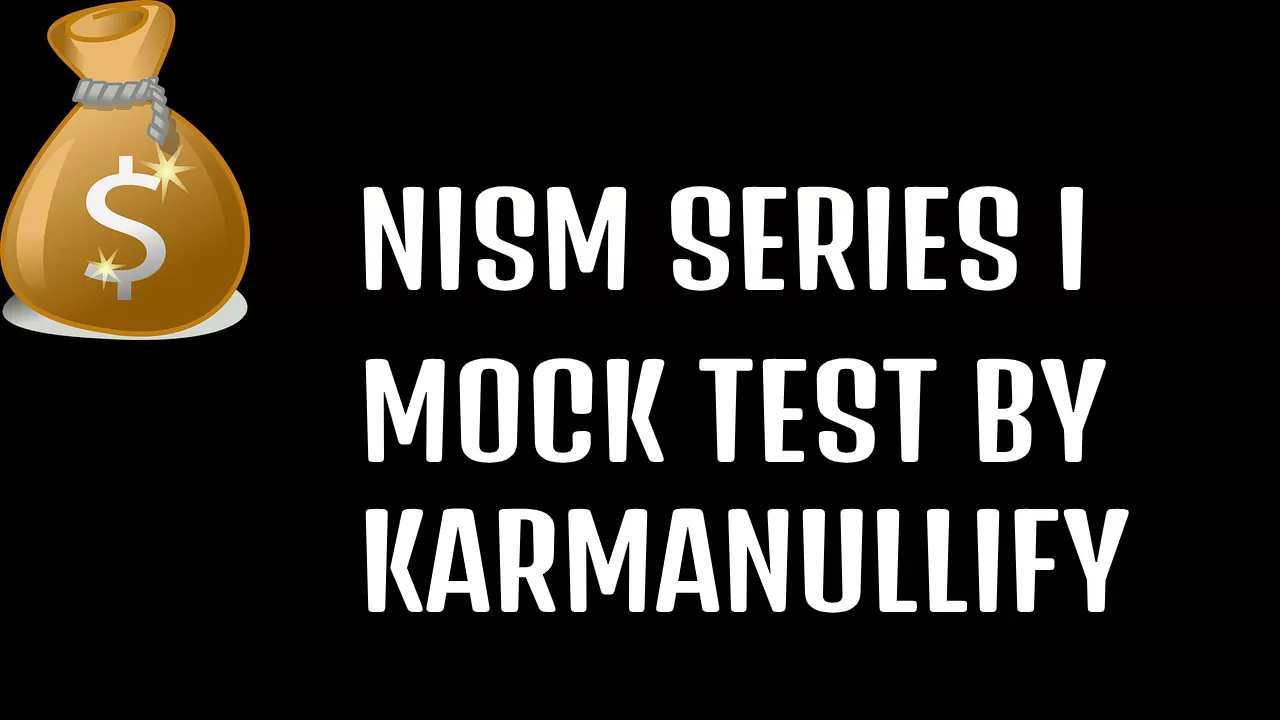NISM Series 1 is also known as NISM Currency Derivatives Certification Examination. As Currency Futures is a huge market. Like other NISM modules, this series covers all the relevant aspects of currency futures in brief.
A must course for those who work as currency market professionals, importers, exporters and traders in India.
As we all know that SEBI has made certain NISM Certifications compulsory in India. As SEBI is Government body just like RBI, one can’t take SEBI rules and regulations lightly.
Emergence Of Currency Futures Trading in India:
The Indian financial resources have been increasing quickly over the last few decades, and changes in its capital markets, and financial instruments have quickened at a similar pace.
Finally large financial institutions, trading firms, importers, autonomous merchants, exporters, and business hedgers have a fully functioning structure for purchasing and selling Indian Rupees all over the world.
Currency Futures Trading in India
As we all know, The Indian currency futures market is mostly centered on the exchange rate bond between the US Dollar and Indian Rupee.
Unlike spot foreign exchange, in which one currency is purchased against the selling of the other, Indian currency futures let traders to bet on the predicted direction of one currency without short selling the other.
Indian currency futures is dealt domestically on the NSE (National Stock Exchange), in Mumbai, and internationally on Dubai Gold and Commodities Exchange, located in Dubai, UAE.
It’s obvious that opening a brokerage account is must, You may perhaps open an Indian futures brokerage account, with any finance Services, or open an account with any International broker or US broker, it’s up to you.
Interactive Brokers is one of the few US-based brokers with a complete department dedicated to Indian stock and futures dealing. Richcomm Global Services is other brokerage that offers entry to Indian currency futures.
Be aware that if you use an Indian broker, all of your trading funds will apparently have to be denominated in Rupees, uncovering you to exchange rate risk if the Rupee were to significantly lose value comparative to the Dollar.
It is always recommended to research and follow the basic elements that influence the value of the Indian Rupee in relative to the US Dollar and other international currencies.
The main operators of price alteration are interest rate fluctuations, and the components that have the biggest effect on interest rates, such as GDP growth rate, inflation rate, trade balances, and the last but not least international money flows.
Always keep the track of all important elements that influence both the Rupee in definite terms, as well as respective to the US Dollar.
Knowledge of technical diagnosis is must, and should be use to decide on when to purchase and sell Indian currency futures. In layman terms, Technical breakdown is basically the use of price tables and signs to better predict what values will be doing in the future.
It can assist you better decide if the Rupee is overvalued or undervalued comparative to the Dollar, and at what value you might think over entering a long or short position in the currency futures market.
It is very crucial to carry out an all-inclusive risk and money management plan. All futures deals including Indian currency futures are very risky and high payment instruments so always deal with stop loss.
If you deal without stop losses, probably you’ll in the end get trapped on the wrong side of a big move and lose your whole account.
When making a deal, always go through exactly how much you’re willing to lose ahead of time, as well as at what value you will exit out of the dealing.
Study Material For NISM Series 1 :
You can buy Nism Series 1 workbook from Amazon or you canget previous edition of Ebook of NISM Series 1 from here free of cost.
We also provide free mock test. We have covered all the NISM Series 1 currency derivatives questions and answers with detailed explanation for each question. This mock test also includes numericals as they also very important part of this modules.
Mock Test For NISM Series 1 :
This NISM Series 1 mock test is created by our very experienced teacher who have deep knowledge and experience regarding this certification.
These questions are up to date with detailed explanation of every question. The answers are easy to understand and are 100% accurate.

If you want to solve this mock test related to currency futures to test your knowledge than click on “START NOW” button.
#1. If Robert has sold a ITC future contract (contract multiplier 1000) at 600 and bought it back at 628. What is Robert's gain/loss?
Here, (contract multiplier 1000) means it have lot size of 1000
Robert sold a ITC future contract at 600 and bought it back ( close the position) at 628
then (600-628) = -28. Here, negative sign indicate loss.
So, total losss= lot size x loss in contract = 1000 shares x (-28) = – 28,000 Rs.
Therefore, Robert’s loss is of Rs.28,000
More insight: Whenever Robert sold a future contract then the position will fall down as per his expected loss but Robert didn’t put stop loss and after that bought back the sold contract at higher price i.e. 628. Therefore, Robert is at losss. If Robert would have put stop losss then if position would have fall down then he would be profitable.
#2. SEBI regulates banks
SEBI regulates Stock market while RBI regulates banks in India.
#3. Raghav bought call option of HDFC of strike price of Rs 400 of month March. So, it is advisable to buy put option of same strike price to close his position.
The correct answe is false. As we know, when market falls then we get profit onnly if we buy put. Similarly, if we buy call option and when market rises then we get profit. As Raghav bought call option then so to square off his position he needs to sell put option of same strike price.
#4. If the future price is lower than equity price then this fall is known
For example : Let say in equity the price of HDFC stock is 4831 but in futures the price is 4833. This expected rise in price is known as Contango and this rising market is called as ” Contango Market”.
But if the future price is lower than equity price then this fall is known as Backwardation.
#5. if you bought 20 contracts in futures and then sell 5 contracts from the same account , then how many contracts are left?
As you bought 20 contracts in futures and then sell 5 contracts from the same account then (20-5= 15) contracts are left only.
#6. Seller of put option can make a profit when the price rise or if it remain the same.
By theory, when we bought either call or put option our premium should increase in both condition. But in case when we sell either call or put option our premium should decreases to be profitable. The maximum profit of option seller is premium. so a seller of put option can make a profit when the price rise or if it remain the same.
#7. Shreya bought 1000 shares of a company at Rs 50,000 with face value of Rs.10. And company declares 100% dividended. Then calculate Dividend yield
Dividend received by shreya = face value x shares bought = 10 x 1000 = Rs 10,000
Formula of Dividend yield for 100% dividend declared = Dividend Received / Amount Invested x 100 = 10,000/50,000 x 100 = 20 %.
so, Dividend yield is 20%
#8. Company XYZ Ltd have inventory of Rs 50,000. Calculate sales of XYZ Ltd over the last year if average age of inventory is 30 days.
As mentioned, average age of inventory is 30 days. So inventory turnover ratio= no. of days/ average age of inventory= 365/30 = 12.16 times.
Formula:
- Inventory Turnover = sales/ inventory
- 12.16 = sales/50,000
- Sales = 12.16 x 50000
- Sales = Rs 6,08,333
#9. Company A's Markiet capitalization is Rs 50,000,000. What is the r if book value per shareeturn on equity is is Rs 100 and EPS is Rs 10
Return on equity = EPS/ Book value per share x 100 = 10/100 x 100 = 10%
Therefore, return on equity is 10%
#10. Let say , XYZ Ltd have total debt of Rs 10 lakh and have total cash = 5 lakhs and their Market capitalisation = 32 lakhs. Calculate their Enterprise value
Enterprise value (EV) = Market capitalisation debt – cash = 32 10 – 5 = 37 lakhs.
#11. Calculate the EPS of XYZ Ltd by using the data given here : face value = 10 , Equity capital = Rs. 20,00,000 and Net profit = Rs. 90,00,000.
Given : face value = 10 , Equity capital = Rs. 20,00,000
Therefore,
No. of shares = 2000000 / 10 = 200000
Earning per share of XYZ Ltd = 9000000 / 200000 = 45
Disclaimer: Investment in securities market are subject to market risks, read all the related documents carefully before investing. Please read the Risk Disclosure documents carefully before investing in Equity Shares, Derivatives, Mutual fund, and/or other instruments traded on the Stock Exchanges. As investments are subject to market risks and price fluctuation risk, there is no assurance or guarantee that the investment objectives shall be achieved. Past performance of securities/instruments is not indicative of their future performance. This post is only for Educational purpose.



